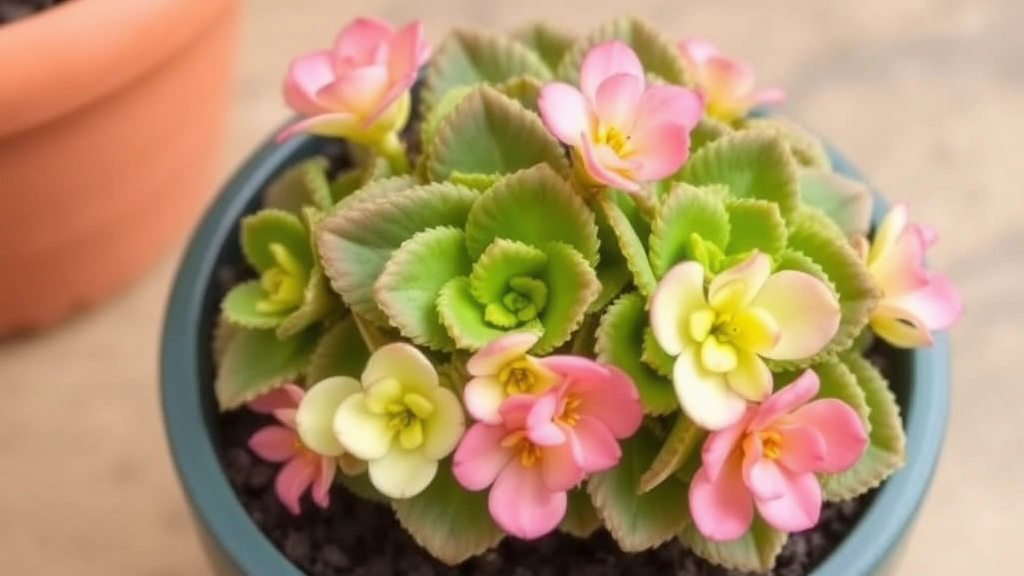How to Care for Kalanchoe Flapjack
Wondering how to care for Kalanchoe Flapjack? You’ve come to the right place. This succulent, also known as paddle plant, thrives with the right balance of light, water, and soil. Let’s dive into the essentials to keep your Kalanchoe Flapjack healthy and vibrant.
Light Requirements
First off, light is crucial. Place your Kalanchoe Flapjack in a spot where it gets plenty of bright, indirect sunlight. Too much direct sun can scorch the leaves, while too little light can cause leggy growth.
Soil and Watering
Next, choose a well-draining soil mix to prevent root rot, and water sparingly—only when the top inch of soil is dry. With these tips, your Kalanchoe Flapjack will flourish in no time.
Are you struggling to get your Kalanchoe Flapjack to thrive? One of the most crucial factors is its light requirements.
Kalanchoe Flapjack, also known as Kalanchoe luciae, is a succulent that loves bright light.
Here’s what you need to know:
– **Optimal Light**: Aim for **full sunlight** for at least **6 hours a day**. This helps maintain the vibrant colours of the leaves.
– **Indirect Sunlight**: If you can’t provide full sunlight, **bright indirect light** can also work, but the plant may not grow as vigorously.
– **Signs of Insufficient Light**: Watch for **elongated stems** or **pale leaves**; these indicate your Flapjack isn’t getting enough light.
– **Rotation**: Rotate the pot every few weeks to ensure even light exposure on all sides.
– **Indoor Placement**: A south-facing window is usually the best spot for your Flapjack indoors.
For more detailed care instructions, check out our [Kalanchoe Flapjack Paddle Plant Care Guide](https://planthq.org/how-to-care-for-kalanchoe-flapjack-complete-guide/). If you notice any issues like elongated stems, you might find our tips on [Fixing Etiolated Kalanchoe Blossfeldiana](https://planthq.org/fixing-etiolated-kalanchoe-blossfeldiana-lighting-and-care-tips/) helpful.
Choosing the Right Soil and Pot for Optimal Growth
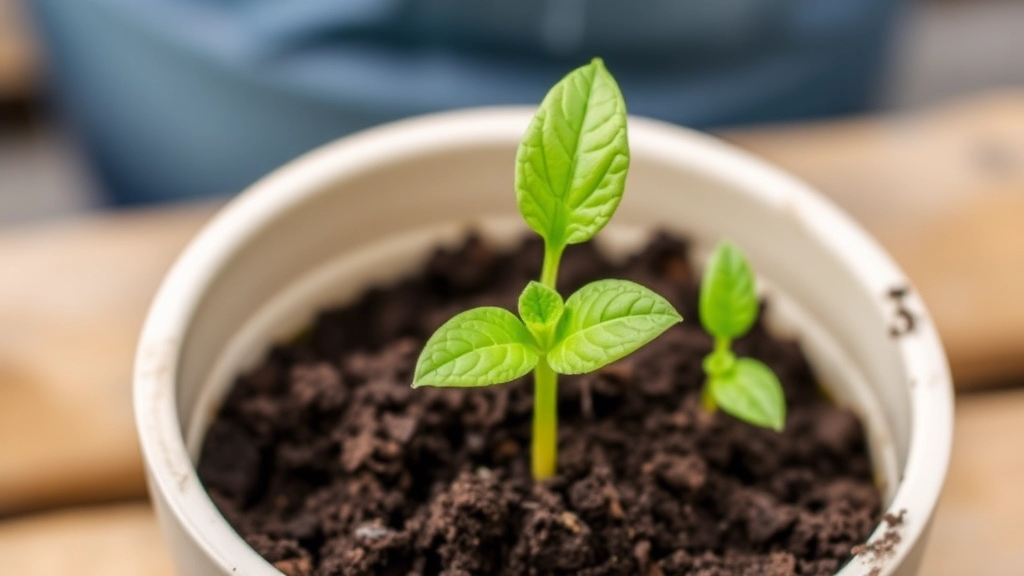
So, you’ve got your Kalanchoe Flapjack, and now you’re wondering, “What’s the best soil and pot for this beauty?”
Choosing the right soil and pot is crucial for your plant’s health.
Soil Selection
Kalanchoe Flapjack loves well-draining soil. Here’s what to look for:
- Cactus Mix: A pre-made cactus mix works wonders.
- Perlite or Sand: Mix in some perlite or coarse sand to boost drainage.
- pH Level: Aim for a slightly acidic to neutral pH (around 6.0 to 7.0).
Remember, soggy soil can lead to root rot, which is a nightmare for any plant parent.
Pot Choice
Now, let’s talk pots. You want something that’s not just pretty but practical too:
- Drainage Holes: Always choose a pot with drainage holes. This helps excess water escape.
- Material: Terracotta pots are great because they’re breathable and help wick moisture away.
- Size: Go for a pot that’s just a tad bigger than the root ball. Too big can hold too much moisture.
Quick Tips
- Repotting: If your Flapjack starts to outgrow its pot, repot in spring.
- Check Roots: If roots are coming out of the drainage holes, it’s time for a bigger pot.
Proper Watering Techniques to Avoid Root Rot
When it comes to caring for your Kalanchoe Flapjack, one of the most pressing concerns is watering. Overwatering is a common issue that can lead to root rot, a condition that can be detrimental to your plant’s health.
Understanding Watering Needs
Kalanchoe Flapjack thrives in arid conditions, so it’s essential to adopt the right watering techniques:
- Check the Soil Moisture: Before watering, always check the top inch of soil. If it feels dry, it’s time to water. If it’s still moist, hold off for a few days.
- Water Deeply but Infrequently: When you do water, ensure you soak the soil thoroughly. This encourages deep root growth. However, allow the soil to dry out completely between waterings.
- Use Well-Draining Soil: A cactus or succulent mix is ideal, as it prevents excess moisture from lingering around the roots.
- Choose the Right Pot: Ensure your pot has drainage holes. This allows excess water to escape, reducing the risk of root rot.
Signs of Overwatering
Keep an eye out for these indicators that you may be overwatering your Kalanchoe Flapjack:
- Yellowing leaves
- Mushy stems
- A foul smell from the soil
If you notice any of these signs, it’s crucial to adjust your watering schedule immediately. For more detailed advice on maintaining healthy Kalanchoe plants, check out our Winter Care Tips for Healthy Kalanchoe Plants. Additionally, if you’re interested in expanding your collection, you might find our Top Kalanchoe Mother of Thousands Varieties & Care Tips useful.
Ideal Temperature and Humidity Conditions
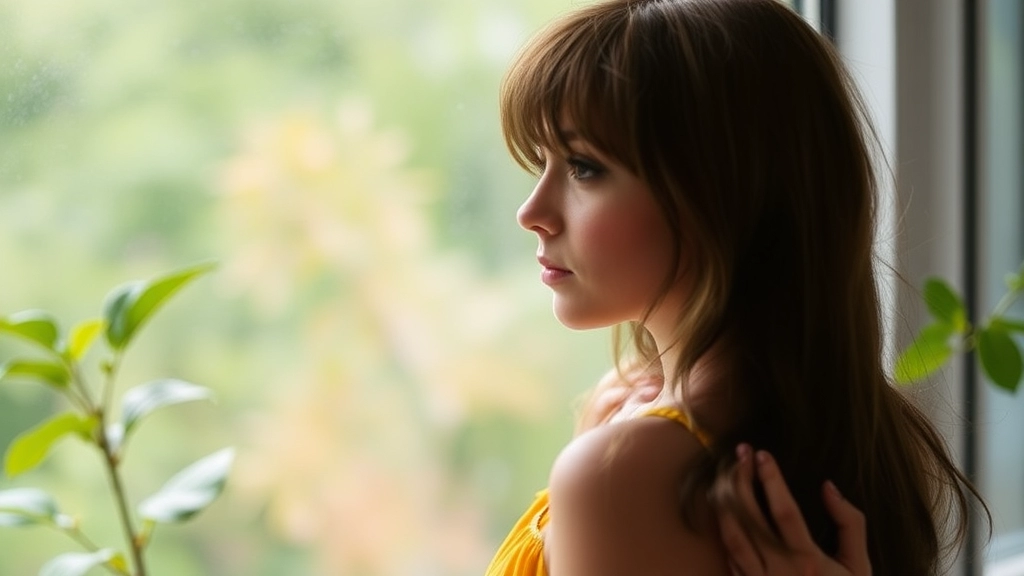
When it comes to nurturing your Kalanchoe Flapjack, understanding its temperature and humidity needs is crucial. You might be wondering, “What’s the perfect environment for my plant to thrive?”
Temperature Requirements
Kalanchoe Flapjack thrives best in warm conditions. Here are some key points to consider:
- Optimal Range: Aim for temperatures between 20°C to 25°C (68°F to 77°F) during the day.
- Nighttime Temperatures: At night, it can tolerate cooler temperatures down to 10°C (50°F).
- Avoid Extremes: Keep it away from frost and extreme heat, as these can stunt growth or even kill the plant.
Humidity Levels
Humidity plays a significant role in the health of your Kalanchoe Flapjack:
- Low Humidity Preference: This succulent prefers lower humidity levels, typically around 30% to 50%.
- Indoor Considerations: If you live in a humid area, ensure good air circulation around the plant to prevent rot.
Tips for Maintaining Ideal Conditions
- Location Matters: Place your plant near a window where it can enjoy bright, indirect sunlight.
- Temperature Monitoring: Use a thermometer to keep track of the temperature fluctuations in your home.
- Humidity Control: If humidity is too high, consider using a dehumidifier or placing the plant in a well-ventilated area.
Fertilizing Kalanchoe Flapjack for Healthy Growth
Are you wondering how to keep your Kalanchoe Flapjack thriving? Fertilization plays a key role in promoting robust growth and vibrant leaves.
Understanding Fertilizer Needs
Kalanchoe Flapjack, known for its striking foliage, benefits from a balanced approach to fertilization. Here’s what you need to know:
- Type of Fertilizer: Use a balanced, water-soluble fertiliser, such as a 10-10-10 or 20-20-20 formula.
- Dilution: Always dilute the fertiliser to half the recommended strength to avoid overwhelming the plant.
- Frequency: Fertilize every 4-6 weeks during the growing season (spring and summer). Reduce or stop fertilization in the fall and winter when the plant’s growth slows.
Signs of Nutrient Deficiency
Keep an eye on your Kalanchoe Flapjack for signs that it may need feeding:
- Pale Leaves: This can indicate a lack of nitrogen.
- Stunted Growth: If your plant isn’t growing as expected, it might need more nutrients.
- Yellowing Leaves: This could signal a deficiency in essential minerals.
Additional Tips for Fertilizing
- Organic Options: Consider organic fertilisers like fish emulsion or seaweed extract for a gentle boost.
- Avoid Over-Fertilization: Too much fertiliser can lead to salt build-up, harming the roots.
For more detailed guidance on caring for your Kalanchoe Flapjack, check out our ultimate guide for healthy growth. Additionally, if you notice your plant not blooming as expected, you might want to explore the causes and solutions for non-flowering Kalanchoe.
How to Protect Your Flapjack from Extreme Sunlight
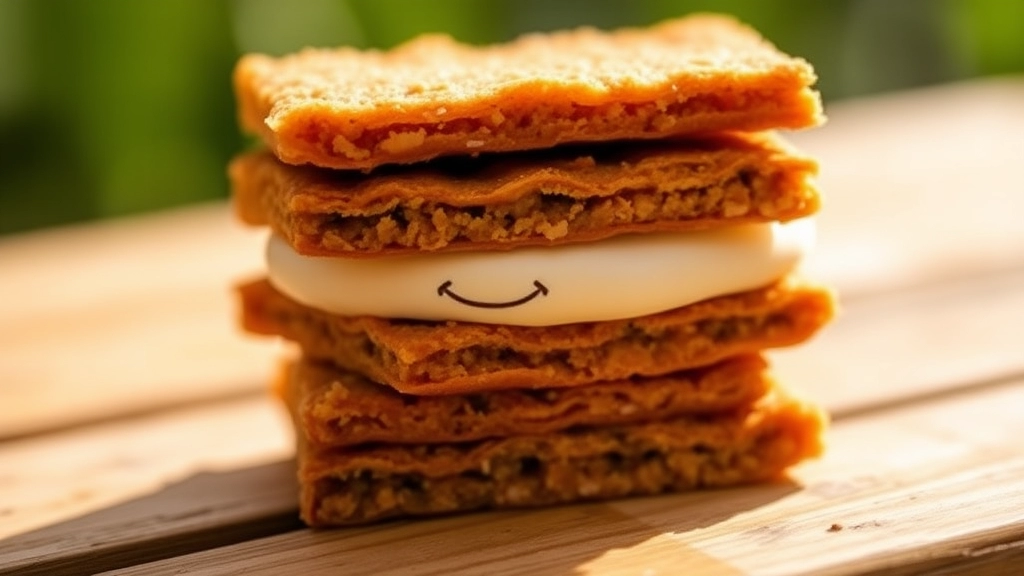
You might be wondering, “Can my Kalanchoe Flapjack really handle the sun?”
Well, while these vibrant succulents love bright light, too much direct sunlight can lead to sunburn and stress.
Here’s how to keep your Flapjack happy and healthy:
- Find the Right Spot:
- Ideally, place your plant in a location that gets bright, indirect sunlight.
- A south or west-facing window is great, but consider sheer curtains to filter harsh rays.
- Watch for Signs of Stress:
- Look out for yellowing leaves or browning edges.
- If your Flapjack starts to look crispy, it’s a clear sign it needs a break from the sun.
- Rotate Your Plant:
- Give your Flapjack a little twist every couple of weeks.
- This ensures even light exposure and prevents it from leaning towards the light source.
- Use Shade Cloth:
- If you’re in a particularly sunny area, consider using shade cloth.
- It can help diffuse the sunlight without blocking it completely.
- Move Indoors During Heat Waves:
- On scorching days, bringing your Flapjack indoors can save it from the worst of the heat.
- Just be sure to keep it near a window for light.
By taking these steps, you’ll ensure your Kalanchoe Flapjack thrives without the risk of sunburn.
As we delve deeper into caring for your Kalanchoe Flapjack, it’s essential to consider the potential threats that can undermine its health.
### What Pests to Watch For
Kalanchoe Flapjack can be susceptible to several pests that might compromise its vitality. Here are the most common ones:
– **Mealybugs**: These tiny pests appear as white cottony masses on the leaves. They suck the sap, leading to wilting.
– **Spider Mites**: Look for fine webbing and speckled leaves. These pests thrive in dry conditions.
– **Aphids**: Small and green, these insects can cluster on new growth, causing stunted development.
– **Scale Insects**: These pests resemble small bumps on the stems and leaves, draining nutrients from your plant.
### Diseases to Be Aware Of
In addition to pests, diseases can also affect the health of your Kalanchoe Flapjack:
– **Root Rot**: Often caused by overwatering, this disease leads to mushy roots and can be fatal.
– **Powdery Mildew**: A fungal infection that appears as a white powder on leaves, often due to high humidity.
– **Leaf Spot**: This condition manifests as dark spots on leaves, generally caused by fungal pathogens.
### Prevention and Treatment
To keep your Kalanchoe Flapjack thriving, consider these preventive measures:
– **Regular Inspections**: Check your plant weekly for signs of pests or disease.
– **Proper Watering**: Avoid overwatering to prevent root rot.
– **Good Air Circulation**: Ensure your plant is in a well-ventilated area to reduce humidity and fungal growth.
If you do spot pests or diseases, act quickly:
– **Neem Oil**: A natural remedy effective against many pests.
– **Insecticidal Soap**: Useful for treating infestations without harming your plant.
– **Remove Affected Leaves**: Prune any leaves showing signs of disease to prevent spread.
By staying vigilant, you can protect your Kalanchoe Flapjack from these common threats and ensure it remains healthy. For more detailed advice on caring for this plant, check out our [complete guide to growing Kalanchoe Pink Butterflies](https://planthq.org/complete-guide-to-growing-kalanchoe-pink-butterflies/) and [outdoor Kalanchoe care tips](https://planthq.org/outdoor-kalanchoe-care-expert-tips-and-best-practices/).
Pruning and Maintenance for a Healthy Plant
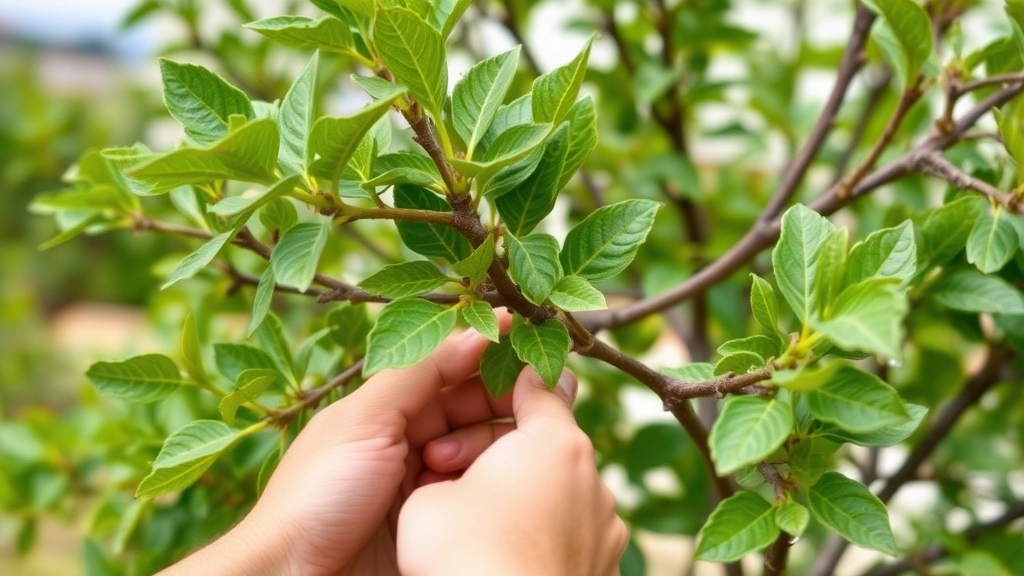
So, you’ve got your Kalanchoe Flapjack thriving, but how do you keep it looking its best?
Pruning is key to maintaining a healthy and vibrant plant.
Why Prune?
- Encourages Growth: Cutting back old leaves stimulates new growth.
- Prevents Overcrowding: It keeps your plant from becoming too bushy.
- Removes Dead Material: This helps prevent diseases and pests.
When to Prune:
- The best time to prune is during the growing season, typically in spring and summer.
- Avoid pruning in winter when the plant is dormant.
How to Prune:
- Use clean, sharp scissors or pruning shears.
- Cut back dead or yellowing leaves at the base.
- Trim any leggy growth to encourage a bushier appearance.
Maintenance Tips:
- Dust the Leaves: Wipe down the leaves with a damp cloth to remove dust. This helps the plant breathe better.
- Check for Pests: Regularly inspect your Flapjack for any signs of pests. Catching them early makes treatment easier.
- Rotate the Plant: Give your plant a quarter turn every few weeks to ensure even light exposure.
Propagation Methods for Kalanchoe Flapjack
As we delve deeper into the care of Kalanchoe Flapjack, understanding how to propagate this unique succulent can be incredibly rewarding. Propagation not only allows you to expand your collection but also ensures that you can share this delightful plant with friends and family.
Leaf Cuttings
One of the most popular methods for propagating Kalanchoe Flapjack is through leaf cuttings. Here’s how you can do it:
- Choose a Healthy Leaf: Select a plump, healthy leaf from the parent plant.
- Cut the Leaf: Using clean, sharp scissors, cut the leaf close to the stem.
- Drying: Allow the cut leaf to dry for a few days in a shaded area. This helps form a callus, reducing the risk of rot.
- Planting: Once callused, place the leaf on top of well-draining soil. You can lightly press it into the soil but avoid burying it.
- Watering: Mist the soil lightly, ensuring it remains slightly moist but not soggy.
Offsets
Kalanchoe Flapjack often produces offsets, or “pups,” which can be easily propagated:
- Identify Offsets: Look for small plants growing at the base of the parent plant.
- Separation: Gently twist or cut the offset away from the parent, ensuring some roots are attached.
- Replanting: Plant the offset in a small pot with well-draining soil.
- Care: Water lightly and place in bright, indirect light.
Seed Propagation
While less common, you can also propagate Kalanchoe Flapjack from seeds:
Toxicity Concerns and How to Handle Safely
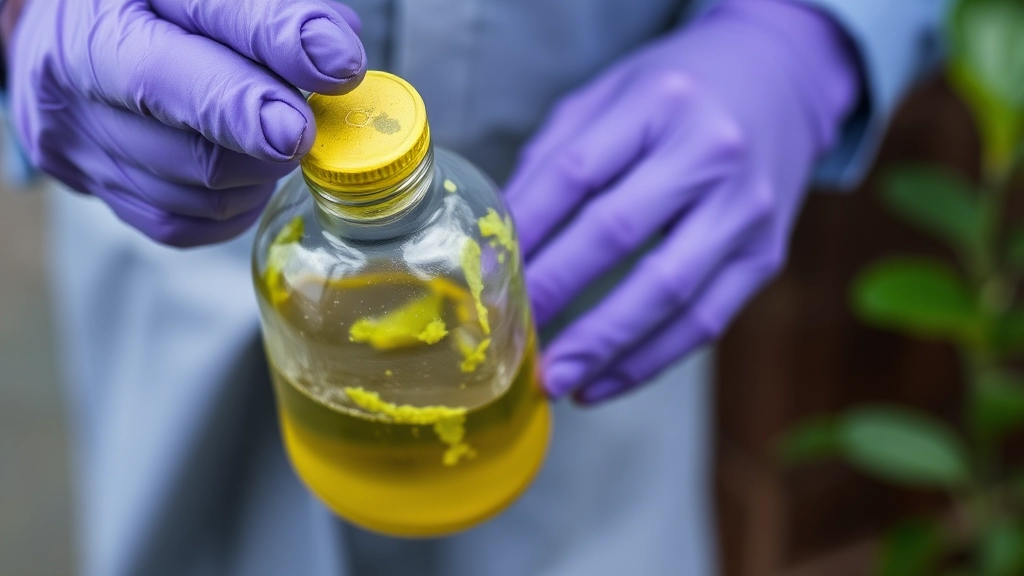
Have you ever wondered if your Kalanchoe Flapjack is safe to have around pets or kids?
You’re not alone in this concern.
Kalanchoe Flapjack, while a stunning addition to your home, does come with some toxicity risks.
Here’s what you need to know to keep your space safe while enjoying this beautiful succulent.
Understanding Toxicity
- Mildly Toxic: Kalanchoe Flapjack contains compounds that can be harmful if ingested.
- Symptoms in Pets and Kids: If consumed, it can lead to symptoms like vomiting, diarrhea, and lethargy.
- Precaution: Keep it out of reach from curious little hands and paws.
Handling Tips
- Wear Gloves: When pruning or repotting, wearing gloves can help avoid skin irritation.
- Wash Hands: Always wash your hands after handling the plant to prevent any accidental ingestion.
- Educate Others: Make sure everyone in your home knows not to munch on the leaves.
Safe Display Ideas
- High Shelves: Place your Flapjack on high shelves or in hanging pots.
- Room Dividers: Use it as a decorative piece in a room divider to keep it out of reach.
- Terrariums: Consider displaying it in a closed terrarium, which can also create a lovely aesthetic.
Tips for Growing Kalanchoe Flapjack Indoors
When growing Kalanchoe Flapjack indoors, you may wonder how to provide the best environment for this unique succulent.
Light Conditions
- Bright, Indirect Light: Place your Flapjack near a window but avoid harsh direct sunlight, which can scorch the leaves.
- Supplemental Lighting: If natural light is limited, consider using grow lights to ensure adequate exposure.
Soil and Pot Selection
- Well-Draining Soil: Use a cactus or succulent mix to prevent waterlogging.
- Pot Choice: Opt for terracotta pots with drainage holes to allow excess moisture to escape.
Watering Practices
- Infrequent Watering: Water only when the top inch of soil feels dry. This helps prevent root rot.
- Drainage: Ensure that the pot drains well to avoid standing water.
Temperature and Humidity
- Ideal Temperature: Maintain a temperature between 18°C and 24°C (65°F to 75°F).
- Low Humidity: Kalanchoe Flapjack thrives in dry conditions, so avoid overly humid environments.
Fertilizing
- Balanced Fertilizer: Use a diluted, balanced fertilizer during the growing season (spring and summer) to promote healthy growth.
Pest Management
- Regular Checks: Inspect your plant regularly for pests like mealybugs or aphids. Early detection is key.
Pruning and Maintenance
- Remove Dead Leaves: Regularly prune away any dead or yellowing leaves to encourage new growth.
Propagation
- Leaf Cuttings: Consider propagating your Flapjack by taking leaf cuttings and allowing them to callous before planting.
Toxicity Awareness
- Handling with Care: Be mindful that Kalanchoe can be toxic to pets. Always wash your hands after handling.
Seasonal Adjustments
- Winter Care: Reduce watering during the winter months when the plant is dormant.
For more detailed information on how to care for your Kalanchoe, check out our expert tips on Kalanchoe succulent care. Additionally, if you’re curious about the toxicity of Kalanchoe plants, read our guide on Kalanchoe toxicity and safety tips.
Seasonal Care and Adjustments for Kalanchoe Flapjack
So, you’ve got your Kalanchoe Flapjack thriving, but how do you keep it happy through the changing seasons?
Understanding Seasonal Needs
Each season brings its own set of challenges and opportunities for your plant.
FAQs on How to Care for Kalanchoe Flapjack
What type of soil is best for Kalanchoe Flapjack?
Kalanchoe Flapjack thrives in well-draining soil. A pre-made cactus mix is ideal, and you can enhance drainage by mixing in some perlite or coarse sand. Aim for a slightly acidic to neutral pH level, around 6.0 to 7.0.
What kind of pot should I use for my Kalanchoe Flapjack?
Choose a pot with drainage holes to allow excess water to escape. Terracotta pots are excellent because they are breathable and help wick moisture away. Ensure the pot is just slightly larger than the root ball to prevent excess moisture retention.
What are the ideal temperature and humidity conditions for Kalanchoe Flapjack?
Kalanchoe Flapjack prefers warm temperatures between 20°C to 25°C (68°F to 77°F) during the day and can tolerate cooler temperatures down to 10°C (50°F) at night. This succulent thrives in low humidity levels, typically around 30% to 50%.
How can I protect my Kalanchoe Flapjack from extreme sunlight?
Place your plant in a spot with bright, indirect sunlight. Use sheer curtains to filter harsh rays if needed. Watch for signs of stress such as yellowing leaves or browning edges, and rotate your plant regularly for even light exposure. During heat waves, consider moving the plant indoors near a window.
When and how should I prune my Kalanchoe Flapjack?
The best time to prune is during the growing season, typically in spring and summer. Use clean, sharp scissors or pruning shears to cut back dead or yellowing leaves at the base and trim any leggy growth to encourage a bushier appearance.
Is Kalanchoe Flapjack toxic to pets and children?
Yes, Kalanchoe Flapjack is mildly toxic if ingested, causing symptoms like vomiting, diarrhea, and lethargy in pets and children. Keep the plant out of reach and wash your hands after handling it. Consider placing it on high shelves or in hanging pots to ensure safety.
How can I maintain the health of my Kalanchoe Flapjack?
Regularly dust the leaves with a damp cloth, check for pests, and rotate the plant every few weeks for even light exposure. If the plant starts to outgrow its pot, consider repotting it in spring.
References
-
Growing Kalanchoe Flapjack: Tips for Success
-
Kalanchoe Flapjack Care Guide
-
How to Care for Kalanchoe Flapjack
